Going the Distance: The Life and Death of DuMont Television
The tragic tale of the trailblazing TV network that spawned the first American sitcom
This is the story of a scrappy little TV network that lived longer than anyone expected before a series of unfortunate circumstances erased it from existence. Like the character from Cake’s 90s hit, DuMont was “going the distance.”
The Race for Third Place
Reluctantly crouched at the starting line
Engines pumping and thumping in time
The green light flashes, the flags go up
Churning and burning, they yearn for the cup
In the beginning, there were four television networks: CBS, NBC, ABC, and DuMont. CBS and NBC both had successful radio programs and popular stars; ABC and DuMont did not.
CBS and NBC dominated the market with programs like I Love Lucy, The Abbott and Costello Show, and The Milton Berle Show and stars like Ed Sullivan, Jack Benny, and Sid Caesar. Meanwhile, ABC and DuMont scraped together whatever funds and connections they had to battle it out for the coveted title of “The Third Network.”
“It sounds like you’re going to need glass tubes.”
DuMont Television was founded by Dr. Allen B. DuMont, a pioneer TV manufacturer whose contributions to the development of cathode ray tubes (CRTs) were fundamental to the success of the industry. In 1942, Dr. DuMont decided to venture into the world of TV broadcasting by creating the DuMont network.
To give his network a chance against the giants of CBS and NBC, DuMont partnered with Paramount, who purchased a 40% share in the company and helped generate capital for the fledgling network. They also added their two TV stations in Chicago and Los Angeles to DuMont’s three in New York, Pittsburgh, and Washington, DC, allowing the network to expand across the country.
Like the other three networks, DuMont’s early programming was mostly commercial and experimental, but unlike the other three networks, DuMont continued to broadcast regularly throughout World War II (the other networks only broadcasted sporadically). In 1945, DuMont was the only TV network to announce the dropping of the atomic bomb on Nagasaki.
In 1946, DuMont was the first television network to begin broadcasting regular network service, beating the other three networks by at least two years. Its first show, Serving Through Science, hit the airwaves on August 15, 1946.
The show was hosted by Dr. Miller McClintock, who introduced and discussed short educational films made by Encyclopædia Britannica. It was the first ever educational series on US television.
The Little Network that Could
They deftly maneuver and muscle for rank
Fuel burning fast on an empty tank
Reckless and wild, they pour through the turns
Their prowess is potent and secretly stern
While DuMont struggled to compete with the bigger networks, its innovations revolutionized the TV world.
In the early days of television, the big networks allowed each program to be sponsored by only one advertiser, which gave the sponsors influence over the content. DuMont bucked tradition by allowing multiple advertisers to sponsor one program, which meant that the network wasn’t at the mercy of the sponsors and had complete control of their own content, which is standard practice for TV today.
Their unique advertising practice allowed DuMont to achieve things that other networks wouldn’t even attempt at the time, like broadcasting programs featuring people of color.
If punk rock had been a thing at the time, DuMont would’ve been the most punk network ever.
The First Black TV Star
The Laytons, a DuMont sitcom that ran from August to October of 1948, chronicled “the events in the life of the Layton family with the competent guiding hand of their housekeeper Martha” (Weiss, 1952). Martha, who despite being a housekeeper was very much the star of the show, was played by Amanda Randolph, a black woman. She was the first black actor to star in a US network TV series.
When The Laytons was canceled, Randolph went on to helm her own variety show on DuMont called Amanda that same year, making her the first black actor to ever host a television series.
Another black woman, musician and singer Hazel Scott, also hosted her own show on DuMont, The Hazel Scott Show, two years later in 1950. She’s often mistakenly credited as the first black woman to host her own show. In fact, it was Amanda Randolph with Amanda, but that certainly doesn’t take away from Scott’s achievement.
The First Asian American TV Star
Asian American actor, Anna May Wong, starred in the DuMont series, The Gallery of Madame Liu-Tsong, from 1951 to 1952. It was the first ever TV show with an Asian American star.
Wong played an art dealer who was routinely involved in detective work and international intrigue. It sounds like a kickass premise, but unfortunately, no episodes or clips of the show survive today (more on that later).
TV’s First Single Mother
The first single mother on US television appeared on a DuMont show called The O’Neills, which aired from 1949 to 1950. Based on a radio program, this dramatic series starred Vera Allen as Peggy O'Neill, a widowed dress designer raising two children.
The First TV Movie and Soap Opera
DuMont was the first network to broadcast a made-for-TV movie, RKO’s Talk Fast, Mister, in 1944. In 1946, they aired the first ever network-televised soap opera, Faraway Hill.
The First American TV Sitcom
In 1947, DuMont broadcast the first ever American TV sitcom, Mary Kay and Johnny. The show starred real life married couple Mary Kay and Johnny Stearns as themselves, and it was based on the couple’s real lives.
Those who had the privilege of watching Mary Kay and Johnny noted striking similarities to I Love Lucy, which premiered in 1951, but Mary Kay and Johnny did it first.
In fact, they did a lot of things first. Not only did they create and star in the first American sitcom, but they were also the first ever married couple to share a bed on US TV. When Mary Kay became pregnant with their son, Christopher, she was the first woman ever to appear pregnant on US TV and the first actor to have her pregnancy written into the plot of a TV show.
Sorry, Ricardos, but the Stearnses were the real first family of television.
Noteworthy Programs
While low-budget gameshows and live sports coverage made up most of DuMont’s programming, a few entertainment shows and news specials managed to gain some notoriety for the network.
Cavalcade of Stars (1949–1952)
DuMont’s variety show, Cavalcade of Stars, was where Jackie Gleason first performed his legendary “The Honeymooners” sketches with Pert Kelton playing his wife. He later moved to CBS and changed the name of the show to The Jackie Gleason Show.
Life is Worth Living (1952–1955)
DuMont’s popular Christian devotional series, Life is Worth Living, is still re-run today on a Catholic cable network. Its host, Archbishop Fulton J. Sheen, won an Emmy for “Most Outstanding Personality” in 1952.
The Johns Hopkins Science Review (1950–1955)
The groundbreaking educational program, The Johns Hopkins Science Review, won Peabody awards in both 1950 and 1952.
Captain Video and His Video Rangers (1949–1955)
Captain Video and His Video Rangers, the first ever sci-fi TV series, was wildly popular with both children and adults, and in 2004, Captain Video even made TV Guide’s list of the “25 Greatest Sci-Fi Legends.”
The Army-McCarthy Hearings (1954)
In 1954, DuMont and ABC were the only two networks permitted to televise the historic Army-McCarthy hearings, a series of hearings held by the US Senate's Subcommittee on Investigations to examine accusations between the US Army and Senator Joseph McCarthy.
Cutting Edge Technology
The firsts didn’t end with programming. DuMont also spearheaded some state-of-the-art TV technology.
Simultaneous Broadcasting
In 1949, DuMont became the first network ever to live broadcast programming in two time zones simultaneously. Previously, programs shot on the East Coast were recorded on kinescopes, which basically means they stuck a camera in front of a TV monitor and filmed the screen. The kinescopes were then broadcast later for other time zones, which meant people who didn’t live on the East Coast pretty much got the shaft when it came to TV quality.
But our man Dr. DuMont invested $3 million in coaxial cable that linked his stations on the East Coast to Paramount’s stations in Chicago and Los Angeles so they could simultaneously broadcast live programs, establishing another future TV standard.
Electronicams
In 1955, DuMont developed the revolutionary Electronicam, which was a combination live television camera and film camera in one. It allowed the network to record their programs on film while broadcasting them live. When Jackie Gleason jumped ship for CBS, the rival network used DuMont Electronicams to film 39 “The Honeymooners” sketches on The Jackie Gleason Show.
Raw Deal
As they speed through the finish, the flags go down
The fans get up and they get out of town
The arena is empty except for one man
Still driving and striving as fast as he can
Against all odds, DuMont continued to survive by the skin of its teeth, growing from a small studio in their Madison Avenue headquarters to a $5 million production center, the largest in the industry at the time. DuMont’s Pittsburgh station was the only commercial VHF station in the city, and Dr. DuMont cleverly used this fact to get his programs cleared in larger markets.
Dr. DuMont also planned to expand the network nationwide by licensing more TV stations, but the FCC put a stop to that. In the early 50s, networks were legally permitted to own licenses for a maximum of five VHF TV stations. When Dr. DuMont applied to add two more to his existing three stations, he was rejected. The FCC determined that since Paramount, DuMont’s partner, owned two stations, DuMont had already reached the maximum. Dr. DuMont fought hard against the FCC and Paramount in court, but he was unsuccessful.
To expand the network’s reach, DuMont was forced to court UHF stations, which most American viewers couldn’t watch because TVs at the time weren’t required to include UHF receivers. If people wanted to watch those stations, they would have to buy expensive converters.
“Curse your sudden yet inevitable betrayal!”
The sun has gone down and the moon has come up
And long ago somebody left with the cup
But he's driving and striving and hugging the turns
And thinking of someone for whom he still burns
DuMont’s deal with Paramount kept getting worse all the time. Paramount cut off their financial support in 1941, and despite their agreement, they never shared any of their films or stars with DuMont, and they never developed any DuMont programs or provided any technical assistance. In fact, in 1948, they launched their own network called the Paramount Television Network. They seemed to want nothing to do with DuMont at all, but they curiously still held onto their 40% interest in the company.
The nail in the coffin came in 1953, when Paramount’s theater division, United Paramount Theaters (UPT) merged with ABC, allowing the previously-struggling network to thrive with national service, top-shelf programming, and connections in Hollywood. ABC secured its place as “The Third Network,” signaling the death knell for DuMont.
DuMont worked up a deal to merge with the newly-successful ABC, but their old friends at Paramount vetoed it, claiming anti-trust concerns.
The Last Broadcast
He's going the distance
He's going for speed
She's all alone
All alone in her time of need
Because he's racing and pacing and plotting the course
He's fighting and biting and riding on his horse
He's going the distance
After Paramount’s sudden yet inevitable betrayal left Dr. DuMont struggling to pay the network’s bills, he made the devastating decision to sell his Pittsburgh station, the only thing keeping DuMont alive, in 1954.
From there, shit hit the fan. The company lost more than half of its advertising revenue, and Dr. DuMont saw the writing on the wall. He canceled most of the network’s entertainment programs (many of which moved to other networks), leaving only a few inexpensive shows and sporting events.
In 1955, Paramount seized full control of DuMont and canceled all remaining sponsored shows. The network’s last non-sports program, a game show called What’s the Story?, aired in September of that year. After that, the network feed was used exclusively for live sports broadcasts.
The last broadcast on the DuMont network was a high school football game from Dr. DuMont’s hometown of Montclair, New Jersey. It aired on Thanksgiving, 1957, and it was the first and only program ever aired on the network in color.
And just like that, DuMont became the first (and arguably only) major television network ever to be completely erased from existence. About 50 years later, UPN (or United Paramount Network—ha!) and The WB faced similar fates when they were merged to create The CW; however, their programming was largely preserved on the new network, so in a way, they lived on. While a few of DuMont’s shows moved to other networks, most were never seen again.
“Very neat…no problem!”
No trophy, no flowers, no flashbulbs, no wine
He's haunted by something he cannot define
Bowel-shaking earthquakes of doubt and remorse
Assail him, impale him with monster-truck force
In his mind, he's still driving, still making the grade
She's hoping in time that her memories will fade
Among the many forgotten DuMont programs was The Ernie Kovacs Show, which aired on the network from 1954 to 1955. After Kovacs’s death, his wife and co-star, Edie Adams, attempted to recover kinescopes of the show. For many years, she was told they were “unavailable,” but eventually she made a shocking discovery.
In 1996, Adams testified before the Library of Congress, stating that sometime in the early 70s, a group of lawyers were arguing about who should be financially responsible for storing and preserving the DuMont library. One of these lawyers apparently became frustrated and devised an alarming and tragic plot: at 2:00 one morning, he hired three large trucks to transport the kinescopes to a barge in New Jersey, which then dumped them into the Upper New York Bay.
Yes, you read that right. The majority of the DuMont library of TV shows was dumped into the New York Harbor never to be seen again. Although salvaging and restoring the kinescopes is theoretically possible, so far no one has made any attempts or announced any plans to search for them.
And that’s where our story ends: deep underwater just a stone’s throw away from the Statue of Liberty.
Scattered Remains
But fret not, classic TV fans! A handful of DuMont’s programs were spared from their watery grave, and you can watch them! Below, I’ve listed some of the few programs that still exist in some watchable form today.
Mary Kay and Johnny (1947–1948)
Only one DuMont episode of this show is known to still be in existence, and it’s safely guarded by the Paley Center for Media. Sadly, they have not seen fit to share it with the world.
The show later moved to NBC, but those episodes aren’t available either. The only video clip on the internet appeared in a TV Land documentary series called Inside TV Land in 2002. The episode, called “Taboo TV,” discussed the taboo of a married couple sharing a bed on television. Scandalous! The clip isn’t from the DuMont episode at the Paley Center, but you can watch it here.
Easy Aces (1949–1950)
Based on the radio program of the same name, this unique sitcom starred real life married couple Jane and Goodman Ace as themselves and Betty Garde as Jane’s mother. In each episode, the three of them watched TV and made funny comments on the programs, kind of like Beavis and Butt-Head or Mystery Science Theater 3000. So I guess you could say it was the fist of...whatever that genre is. You can watch one episode here. You can also read scripts from the show on The Internet Archive.
The Morey Amsterdam Show (1949–1950)
Part sitcom, part variety show, The Morey Amsterdam Show focused on the staff and regulars at a café, where celebrity guests performed music and comedy. It starred comedian Morey Amsterdam (known for The Dick Van Dyke Show), Art Carney (who would later appear in Jackie Gleason’s “The Honeymooners” sketches on The Jackie Gleason Show), Jacquelin Susann (best-selling author of Valley of the Dolls), and popular singer Vic Damone (who also appeared on The Dick Van Dyke Show).
Based on a radio program, The Morey Amsterdam Show first appeared on CBS but was cancelled after only 13 episodes. DuMont snapped it up, and it ran for 58 more episodes before being replaced by The Adventures of Ellery Queen. Believe it or not, you can watch six whole DuMont episodes of this show on YouTube:
Cavalcade of Stars (1949–1952)
This popular variety show had several hosts, including Larry Storch and Jackie Gleason, who had the foresight to save the kinescopes of many of his original “The Honeymooners” sketches from the show along with the 39 sketches from The Jackie Gleason Show that were filmed using DuMont Electronicams. All of the surviving sketches are now available on DVD and streaming on Tubi under the title of The Honeymooners: Lost Episodes.
Captain Video and His Video Rangers (1949–1955)
This beloved family series starred Al Hodge as Captain Video, a scientific genius living in the year 2254, who used futuristic electronic weapons to save the universe from evil. Four surviving episodes are available on DVD, and you can watch three on YouTube:
The Adventures of Colonel Flack (1953–1954)
Also known as Colonel Humphrey Flack or The Fabulous Fraud, this show followed the exploits of two con men who traveled the world conning other con men out of money so they could give it to the poor, like 1950s Robin Hoods. I found two episodes on YouTube (one of which features a young Jack Klugman) replete with comments from people who still have fond memories of watching the show as kids:
The Goldbergs (1954)
Long before Adam F. Goldberg was even a twinkle in his mother’s eye, Gertrude Berg’s The Goldbergs wowed TV audiences with stories about a poor Jewish family from the Bronx led by a caring matriarch named Molly (played by Berg herself). Based on a long-running radio program, the TV version of this dramedy series originated on CBS in 1949, but it was canceled in 1951 when Berg’s co-star, Philip Loeb, was blacklisted.
NBC briefly picked up the show but canceled it again in 1953. Finally, in 1954, The Goldbergs moved to DuMont, where it ran for one season before going into syndication. After being replaced by Robert H. Harris, Philip Loeb fell into a deep depression and tragically committed suicide in 1955.
Gertrude Berg was a pioneer in the radio and TV industries as a woman who created, produced, wrote, and starred in her own show. She also adapted The Goldbergs into a book, a comic strip, and a Broadway play, and designed a clothing line under her character’s name. In 1951, she won the first ever Emmy award for “Lead Actress in a Television Series.”
You can watch four of the DuMont episodes of The Goldbergs on YouTube:
The Ernie Kovacs Show (1954–1955)
Cigar-toting avant-garde comedian Ernie Kovacs, always one to break with tradition and go against the establishment, naturally chose the quixotic DuMont network for his late night talk show. Fortunately, his wife’s efforts to preserve the show weren’t in vain. A few episodes of The Ernie Kovacs Show still exist as part of “The Ernie Kovacs Collection,” which is available on DVD and streaming on Tubi and Amazon.
Sources
Brown, G. (1996). The Distance. [Recorded by Cake]. On Fashion Nugget [CD].
Brown, L. (1992). Les Brown’s Encyclopedia of Television (3rd Edition). Gale Research Inc.
IMDb. https://www.imdb.com/
Ingram, C. (2016). DuMont Television Network Historical Website. https://dumonthistory.com/
Jensen, B. (2019). Mr. Science Television and the Hopkins Show Ahead of Its Time. John Hopkins Magazine. https://hub.jhu.edu/magazine/2019/spring/johns-hopkins-science-review-lynn-poole/
Kurp, J. (2011, May 10). America’s First Sitcom and Other Forgotten Comedies on DuMont, the Lost Network. Vulture. https://www.vulture.com/2011/05/americas-first-sitcom-and-other-forgotten-comedies-on-dumont-the-lost-network.html
Library of Congress (1996, March 6). Edie Adams’s Testimony Re: Saving of TV’s Golden Years. Library of Congress Blogs. https://www.loc.gov/programs/static/national-film-preservation-board/documents/tvadams.pdf
O’Dell, C. (n.d.). In Search of TV’s First Working Woman. TVparty! http://www.tvparty.com/50-tvs-first-working-women.html
Paley Archive (n.d.). Mary Kay and Johnny (TV): June 13, 1949. The Paley Center for Media. https://www.paleycenter.org/collection/item/?q=&p=1&item=T:13423
Produced by Digital Editors. (2022, March 28). Mary Kay Stearns Made TV History By Having Her Pregnancy Written into Her Storyline on ‘Mary Kay and Johnny’. Showbiz Cheat Sheet. https://www.cheatsheet.com/entertainment/mary-kay-stearns-tv-history-pregnancy-written-storyline-mary-kay-and-johnny.html/
Shales, T. (1985, February 7). Awa-a-ay They Go Again. Washington Post. https://www.washingtonpost.com/archive/lifestyle/1985/02/07/awa-a-ay-they-go-again/f76916ca-f0a5-4b13-ac10-11e404f62012/
Shulman, A., & Youman, R. (1966). How Sweet It Was: Television: a pictorial commentary. Bonanza Books.
Terrace, V. (1979). The Complete Encyclopedia of Television Programs (2nd Edition, Vol. 2, M-Z). A. S. Barnes and Co., Inc.
Terrace, V. (1986). Encyclopedia of Television Series, Pilots, and Specials (Vol. 1, 1937–1973). New York Zeotrope.
The Lost Media Wiki (2021, October 17). Mary Kay and Johnny (partially found American TV sitcom; 1947-1950). The Lost Media Wiki. https://lostmediawiki.com/Mary_Kay_and_Johnny_(partially_found_American_TV_sitcom;_1947-1950)
Upperco, J. (2022, November 16). The American Sitcom Turns 75!. That’s Entertainment!. https://jacksonupperco.com/2022/11/16/the-american-tv-sitcom-turns-75/
Weiss, M. R. (1952). The TV Writer’s Guide. Pellegrini & Cudahy.
Wikipedia. https://en.wikipedia.org/
Williams, R. (2023, March 15). Amanda Randolph: The First Black TV Star. Reel Rundown. https://reelrundown.com/celebrities/Amanda-Randolph-The-First-Black-TV-Star
Williams-Rautiolla, S. (1997). Captain Video and His Video Rangers. Museum of Broadcast Communications Encyclopedia of Television. https://interviews.televisionacademy.com/shows/captain-video-and-his-video-rangers






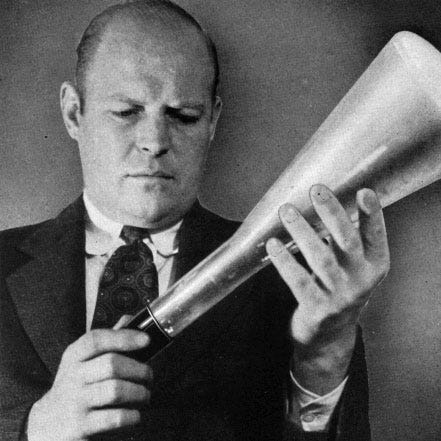


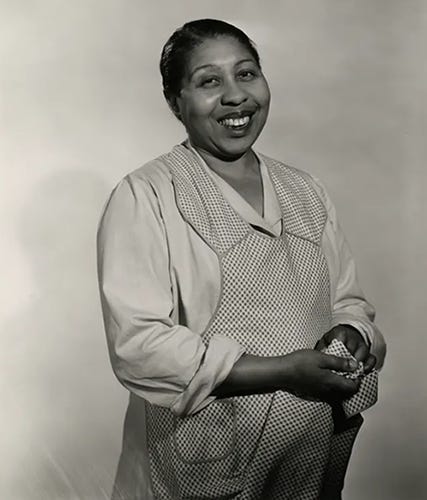
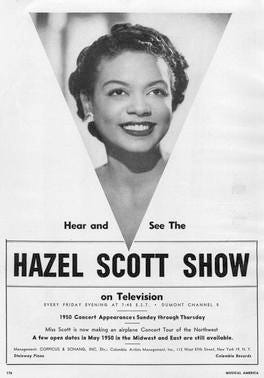







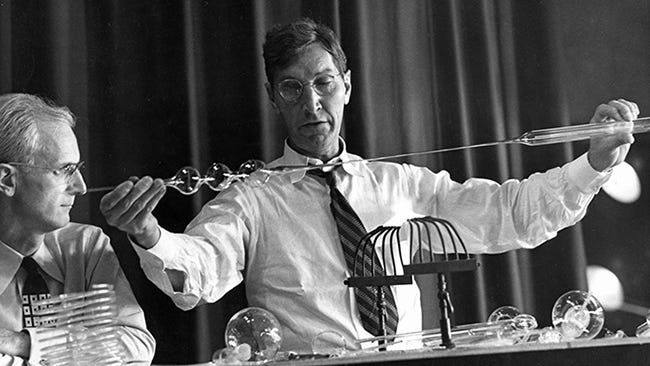



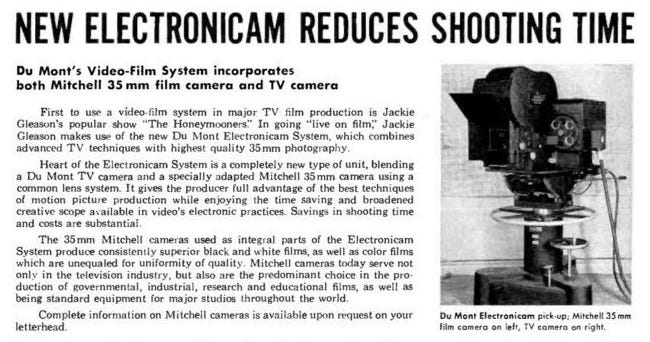














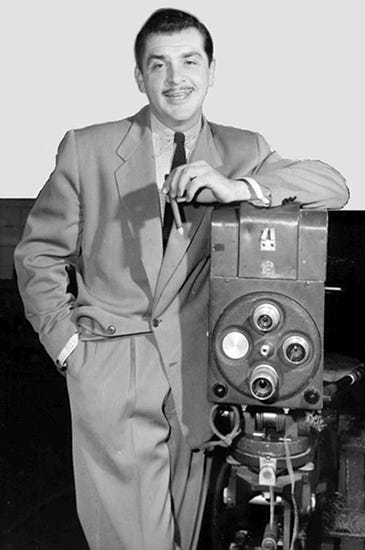
Wow, I just discovered this site and am completely in love. What a wonderfully written article. You are so amazing
This is amazing!!! Omg I never heard of this network. What a treasure trove of cultural artifacts. And they had “The Goldbergs”? I also didn’t know that Loeb committed suicide. My dad was a fan of this show and the reboot which may have not been a true reboot from the late 80s or 90s possibly